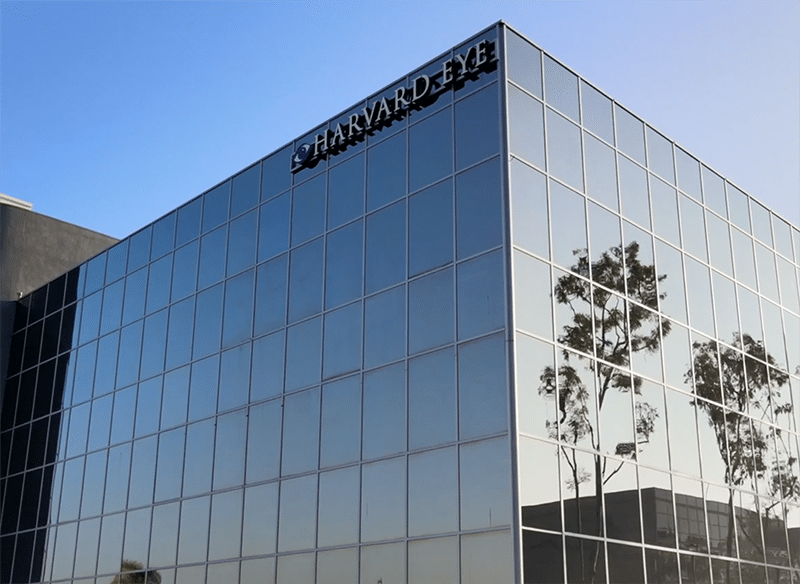The Latest Advancement in Vision Correction Surgery
EVO Visian ICL is a lens that can be an alternative choice for permanent vision correction even when LASIK is not an option.
If you have been imagining a life with less dependence on contact lenses or glasses, it can be disappointing to be told that you are not a candidate for LASIK. However, the road to better vision does not stop at LASIK! While it may be a well-known name in vision correction surgery, there are several other types of procedures that are also clinically proven to allow you to break free from contact lenses or glasses.
At Harvard Eye, we take pride in offering you a variety of advanced vision correction options so we can find the best vision solution for you. We are excited to announce that the EVO Visian ICL Lens, which earned FDA approval in the United States, is now available for our patients.
What is the EVO Visian ICL Lens?
EVO Visian ICL is an Implantable Collamer® Lens that is designed to give you crisp, clear vision.1-4 Like LASIK or PRK, EVO Visian ICL is a refractive surgery that can correct nearsightedness (myopia) with or without astigmatism. What sets ICL apart is that it can correct a high range of myopia without removing any corneal tissue or contributing to dry eye syndrome.5 It offers high quality vision by permanently implanting the ICL that takes the place of glasses or regular contact lenses.
The EVO Visian ICL Lens is made of Collamer, a biocompatible material that is flexible and works in harmony with your eye. The lens is implanted in a 20 to 30 minute procedure and patients typically enjoy a quick recovery time.
Benefits of the EVO Visian ICL Lens
- Can correct/reduce nearsightedness for a wide range of vision, including patients with prescriptions up to -20 diopters and astigmatism up to 4.0 D.
- Provides excellent night vision4,6
- Suitable for patients with dry eye concerns5
- Great for patients with thin corneas, who may not be candidates for other vision correction procedures
- Designed for permanent vision correction, but removable by your doctor and upgradable, if needed
- Has natural UV protection
- Once in place, you will not be able to feel or see the lens
- 20 to 30 minute procedure with quick recovery
Who is a Candidate for Vision Correction with EVO Visian ICL?
People who want a flexible and biocompatible vision correction option and who are not candidates for laser vision correction.
Ideal candidates are:
- Between the ages of 21 and 45
- Seeking treatment for nearsightedness (with or without astigmatism)
- Stable in their current prescription for at least one year
- Not currently pregnant or nursing
- Have good ocular health with no history of glaucoma, iritis, or diabetic eye disease
Interested in learning more about vision correction with the EVO Visian ICL Lens? At Harvard Eye, we offer complimentary LASIK consultations so we can help you decide if it is right for you and answer any questions you have about achieving your best possible vision without glasses or contact lenses.
References: (1) Sanders D, Vukich J. Comparison of implantable collamer lens (ICL) and laser-assisted in situ keratomileusis (LASIK) for Low Myopia. Cornea. 2006. (2) Shin J, et al. Comparison of higher order aberrations after implantable Collamer lens implantation and wavefront-guide LASEK in high myopia. J Refract Surg. 2012; 28(2): 106-111. (3) Igarashi A, et al. Visual Performance after implantable Collamer lens implantation and wavefront-guided laser in situ keratomileusis for high myopia. Am J Opthalmol. 2009. (4) Martínez-Plazs E, López-Miguel A, López-De La Rosa A, et al. Effect of the EVO+ Visian Phakic Implantable Collamer Lens on Visual Performance and Quality of Vision and Life, Am J Ophthalmol 2021;226: 117–125. (5) Naves J, et al.. Diadenosine nucleotide measurements as dry-eye score in patients after LASIK and ICL surgery. Presented at American Society of Cataract and Refractive Surgery (ASCRS) 2012. (6) Parkhurst G. A prospective comparison of phakic Collamer lenses and wavefront-optimized laser-assisted in situ keratomileusis for correction of myopia. Clinical Ophthalmology. 2016.




